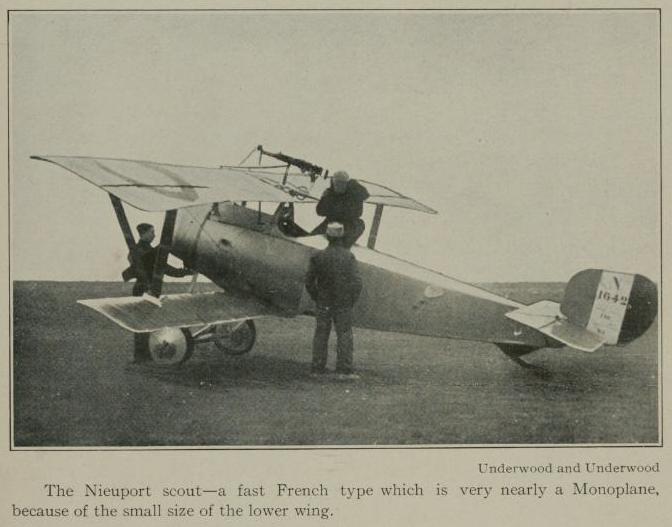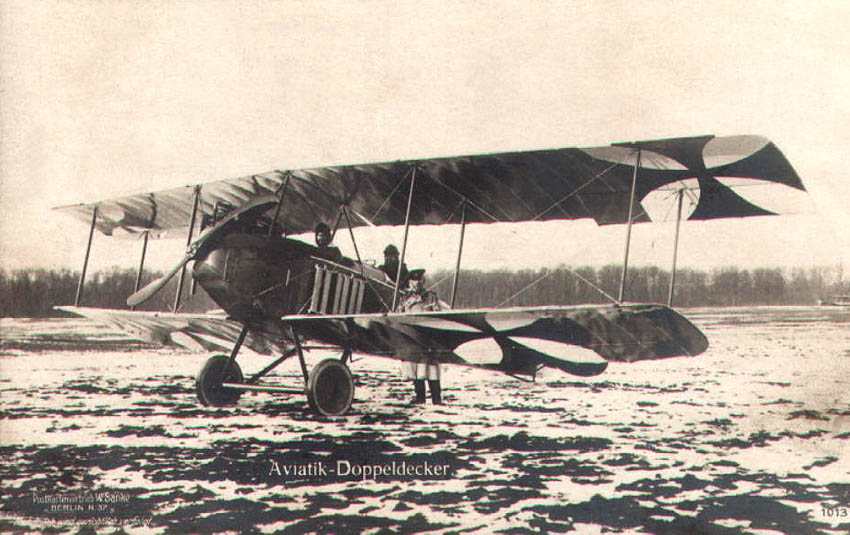|
Frank Linke-Crawford
Oberleutnant Frank Linke-Crawford (18 August 1893 – 30 July 1918), was the fourth-ranking ace of the Austro-Hungarian Air Force during World War I, with 27 victories. Early life He was born in Cracow, in what is presently Poland but then a provincial city of the Austro-Hungarian Empire. His father, Major Adalbert Linke, was a Galician soldier; his mother, Lucy Crawford, was British. Despite this mixed background, he was an Austrian citizen. Linke-Crawford attended school in Meran, Tyrol and Hranice (''Weißkirchen''), Moravia before in 1910 he entered the Theresian Military Academy in Wiener Neustadt. Upon graduation, he was commissioned Lieutenant and assigned to the 6th Dragoon Regiment. On 28 July, a month after the assassination of Archduke Franz Ferdinand, Austria-Hungary declared war on Serbia. This was the initial declaration of war that snowballed into World War I. Linke-Crawford first saw battle on the Russian Front. In November 1914 he was appointed commander of the ... [...More Info...] [...Related Items...] OR: [Wikipedia] [Google] [Baidu] |
Kraków
Kraków (), or Cracow, is the second-largest and one of the oldest cities in Poland. Situated on the Vistula River in Lesser Poland Voivodeship, the city dates back to the seventh century. Kraków was the official capital of Poland until 1596 and has traditionally been one of the leading centres of Polish academic, economic, cultural and artistic life. Cited as one of Europe's most beautiful cities, its Old Town with Wawel Royal Castle was declared a UNESCO World Heritage Site in 1978, one of the first 12 sites granted the status. The city has grown from a Stone Age settlement to Poland's second-most-important city. It began as a hamlet on Wawel Hill and was reported by Ibrahim Ibn Yakoub, a merchant from Cordoba, as a busy trading centre of Central Europe in 985. With the establishment of new universities and cultural venues at the emergence of the Second Polish Republic in 1918 and throughout the 20th century, Kraków reaffirmed its role as a major national academic an ... [...More Info...] [...Related Items...] OR: [Wikipedia] [Google] [Baidu] |
Wiener Neustadt
Wiener Neustadt (; ; Central Bavarian: ''Weana Neistod'') is a city located south of Vienna, in the state of Lower Austria, in northeast Austria. It is a self-governed city and the seat of the district administration of Wiener Neustadt-Land District. The city is the site of one of the world's oldest military academies, the Theresian Military Academy, which was established by Empress Maria Theresa of Austria in 1751 to train officers for the Austrian army. History The area once belonged to the County of Pitten, which had been inherited by Margrave Ottokar III of Styria in 1158. After the dynasty of the Otakars became extinct with the death of his son Ottokar IV, the Duchy of Styria passed to the Austrian House of Babenberg according to the Georgenberg Pact. Duke Leopold V of Austria established the town in 1194 and financed the construction of a fortress close to the Hungarian border with the ransom paid for the English king Richard the Lionheart, whom he had previo ... [...More Info...] [...Related Items...] OR: [Wikipedia] [Google] [Baidu] |
Frank Linke Crawford 2
Frank or Franks may refer to: People * Frank (given name) * Frank (surname) * Franks (surname) * Franks, a medieval Germanic people * Frank, a term in the Muslim world for all western Europeans, particularly during the Crusades - see Farang Currency * Liechtenstein franc or frank, the currency of Liechtenstein since 1920 * Swiss franc or frank, the currency of Switzerland since 1850 * Westphalian frank, currency of the Kingdom of Westphalia between 1808 and 1813 * The currencies of the German-speaking cantons of Switzerland (1803–1814): ** Appenzell frank ** Argovia frank ** Basel frank ** Berne frank ** Fribourg frank ** Glarus frank ** Graubünden frank ** Luzern frank ** Schaffhausen frank ** Schwyz frank ** Solothurn frank ** St. Gallen frank ** Thurgau frank ** Unterwalden frank ** Uri frank ** Zürich frank Places * Frank, Alberta, Canada, an urban community, formerly a village * Franks, Illinois, United States, an unincorporated community * Franks, Missouri, Uni ... [...More Info...] [...Related Items...] OR: [Wikipedia] [Google] [Baidu] |
Pier Piccio
Lieutenant General Count Pier Ruggero Piccio (27 September 1880 – 30 July 1965) was an Italian aviator and the founding Chief of Staff of the Italian Air Force. With 24 victories during his career, he is one of the principal Italian air aces of World War I, behind only Count Francesco Baracca and Tenente Silvio Scaroni. Piccio rose to the rank of Lieutenant General and in later years, became a Roman senator under the Fascists before and during World War II. Early life Pier Ruggero Piccio was born in Rome on 27 September 1880,Franks et al 1997, pp. 151-152. to Giacomo Piccio and Caterina Locatelli.Italian senate's website page on Picci(In Italian, translated by Microsoft) Retrieved 11 May 2013. He attended the Military Academy of Modena, enrolling on October 29, 1898. He graduated on September 8, 1900, as a sottotenente (second lieutenant)Variale 2009, pp. 75-78. assigned to the 43rd Infantry Regiment. In 1903, stultified by garrison duty, he had himself seconded to the Minist ... [...More Info...] [...Related Items...] OR: [Wikipedia] [Google] [Baidu] |
Aviatik C
Automobil und Aviatik AG was a German aircraft manufacturer during World War I. The company was established at Mülhausen (today in France) in 1909 and soon became one of the country's leading producers of aircraft. It relocated to Freiburg in 1914 and to Leipzig in 1916 and established a subsidiary in Vienna as Österreichisch-Ungarische Flugzeugfabrik Aviatik. During the war, the company became best known for its reconnaissance aircraft, the B.I and B.II, although the Austro-Hungarian subsidiary also produced a number of its own designs, including fighters such as the D.I. History The company was founded in December 1909 by the Alsatian Georges Chatel. II cover page It started with the license-production of French aircraft; Hanriot monoplanes and Farman biplanes. From 1912, the factory started building its own successful biplanes, designed by Robert Wild. Just at the beginning of World War One, on 1 August 1914 the company was relocated to Freiburg due to French threat, a ... [...More Info...] [...Related Items...] OR: [Wikipedia] [Google] [Baidu] |
Hansa-Brandenburg C
Hansa und Brandenburgische Flugzeugwerke (more usually just Hansa-Brandenburg) was a German aircraft manufacturing company that operated during World War I. It was created in May 1914 by the purchase of ''Brandenburgische Flugzeugwerke'' by Camillo Castiglioni, who relocated the factory from Liebau to Brandenburg an der Havel. Brandenburg's chief designer, Ernst Heinkel was retained by the new enterprise. By Autumn 1915, it had become the largest aircraft manufacturer in Germany, with a capital of 1,500,000 Marks, 1,000 employees, and two more factories - one in Rummelsburg, Berlin, and one in Wandsbek, Hamburg. Although manufacturing was carried out in Germany, Castiglioni was an Austrian, and many of the firm's military aircraft were produced for the Austro-Hungarian aviation corps. The firm became especially known for a highly successful series of floatplane fighters and reconnaissance aircraft that were used by the Imperial German Navy during the war. Hansa-Brandenburg ... [...More Info...] [...Related Items...] OR: [Wikipedia] [Google] [Baidu] |
Société Pour L'Aviation Et Ses Dérivés
Lactalis is a French multinational dairy products corporation, owned by the Besnier family and based in Laval, Mayenne, France. The company's former name was Besnier SA. Lactalis is the largest dairy products group in the world, and is the second largest food products group in France, behind Danone. It owns brands such as Parmalat, Président, Siggi's Dairy, Skånemejerier, Rachel's Organic, and Stonyfield Farm. History André Besnier started a small cheesemaking company in 1933 and launched its ''Président'' brand of Camembert in 1968. In 1990, it acquired Group Bridel (2,300 employees, 10 factories, fourth-largest French dairy group) with a presence in 60 countries. In 1992, it acquired United States cheese company Sorrento. In 1999, ''la société Besnier'' became ''le groupe Lactalis'' owned by Belgian holding company BSA International SA. In 2006, they bought Italian group Galbani, and in 2008, bought Swiss cheesemaker Baer. They bought Italian group Parmalat in ... [...More Info...] [...Related Items...] OR: [Wikipedia] [Google] [Baidu] |
Nieuport
Nieuport, later Nieuport-Delage, was a French aeroplane company that primarily built racing aircraft before World War I and fighter aircraft during World War I and between the wars. History Beginnings Originally formed as Nieuport-Duplex in 1902 for the manufacture of engine components the company was reformed in 1909 as the Société Générale d'Aéro-locomotion, and its products were marketed to the aviation industry, including ignition components. During this time they built their first aircraft, a small single-seat pod and boom monoplane. This was destroyed shortly after having been flown successfully, during the Great Flood of Paris in 1909 . A second design flew before the end of 1909 and had the essential form of modern aircraft, including an enclosed fuselage with the pilot protected from the slipstream and a horizontal tail whose aerodynamic force acted downwards, balancing the weight of the engine ahead of the centre of gravity, as opposed to upwards as on contempo ... [...More Info...] [...Related Items...] OR: [Wikipedia] [Google] [Baidu] |
Luftfahrtruppen
The Austro-Hungarian Aviation Troops or Imperial and Royal Aviation Troops (german: Kaiserliche und Königliche Luftfahrtruppen or , hu, Császári és Királyi Légjárócsapatok) were the air force of the Austro-Hungarian Empire until the empire's demise in 1918; it saw combat on both the Eastern Front and Italian Front during World War I. History The Air Service began in 1893 as a balloon corps () and would later be re-organized in 1912 under the command of Major Emil Uzelac, an army engineering officer. The Air Service would remain under his command until the end of World War I in 1918. The first officers of the air force were private pilots with no military aviation training. At the outbreak of war, the Air Service was composed of 10 observation balloons, 85 pilots and 39 operational aircraft. By the end of 1914, there were 147 operational aircraft deployed in 14 units. Just as Austria-Hungary fielded a joint army and navy, they also had army and naval aviation ar ... [...More Info...] [...Related Items...] OR: [Wikipedia] [Google] [Baidu] |




.jpg)
